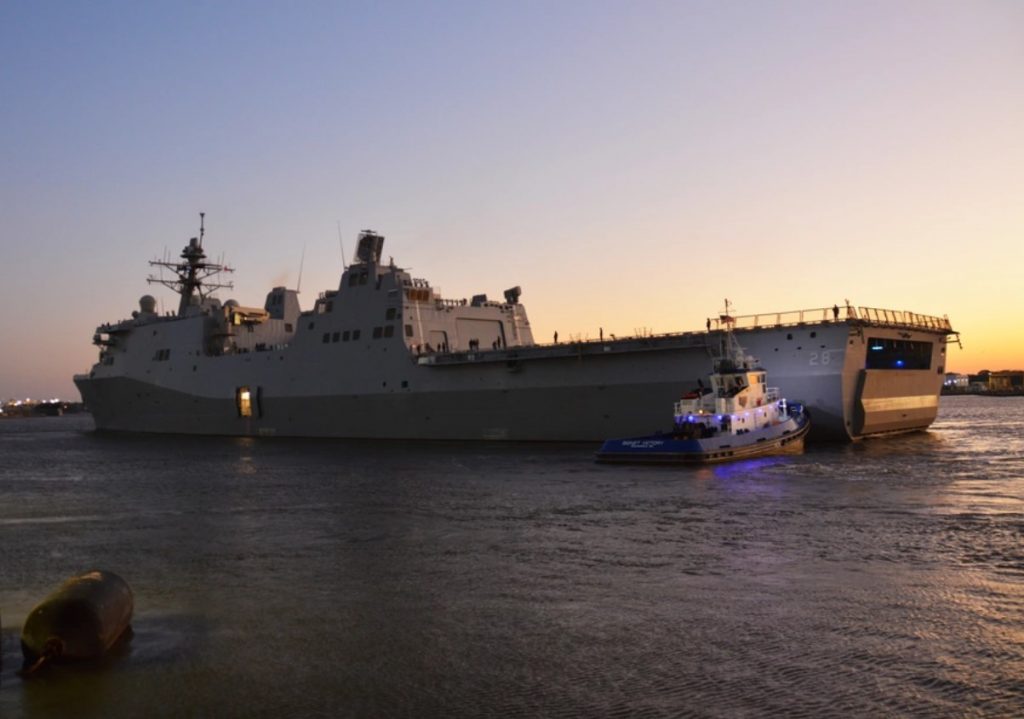The US Navy has taken delivery of two significant platforms in separate ceremonies on March 11 and March 12.
Huntington Ingalls Industries delivered the newest Virginia-class attack submarine, future USS Montana (SSN 794), from its Newport News yard in Virginia on March 12.
The same shipbuilder delivered future USS Ft. Lauderdale (LPD 28), the service’s 12th San Antonio class-amphibious transport dock ship, from its Ingalls Shipbuilding Division in Mississippi on March 11.
PCU Montana is the 21st Virginia-class submarine co-produced by General Dynamics Electric Boat (GDEB) and Huntington Ingalls Industries – Newport News Shipbuilding (HII-NNS) through a long-standing teaming agreement. Montana is the tenth Virginia Class delivered by HII-NNS and the third Block IV configured submarine.
“The delivery of this ship reflects an enormous effort across the navy and industry shipbuilding teams,” said CAPT Todd Weeks, the Virginia-class program manager who rode the boat during sea trials. “This is an exciting time for the program, Montana’s crew and the navy. This is the second Virginia-class submarine to deliver in less than a month and it is in excellent condition. Continued deliveries of attack submarines are critical to the fleet and our national maritime strategy.”
Virginia-class submarines are built to operate in the world’s littoral and deep waters while conducting anti-submarine warfare; anti-surface ship warfare; strike warfare; special operations forces support; intelligence, surveillance and reconnaissance; irregular warfare; and mine warfare missions.
Montana is the second US Navy ship to honor the state. The first USS Montana (ACR-13), an armored cruiser, was also built at Newport News Shipbuilding and commissioned July 1908. She served in the Atlantic and Mediterranean, landed Marines during unrest in Haiti in 1914 and escorted convoys during World War I. She was decommissioned in 1921. Two other battleships (BB 51 and 67) were to have been named Montana however, were cancelled in 1922 and 1943 respectively.

USS Ft. Lauderdale (LPD 28) was officially transferred from the shipbuilder to the navy after it conducted a series of at-sea and pier-side trials to demonstrate its material and operational readiness.
“Following successful builder’s and acceptance trials, LPD 28 will soon be ready to join the fleet to provide critical readiness and capacity to our sailors,” said Capt. Cedric McNeal, program manager, Amphibious Warfare Program Office, Program Executive Office (PEO) Ships. “This ship will help expand our advantage in the maritime domain and brings critical capability now and in the future.”
The San Antonio-class is designed to support embarking, transporting, and landing Marines and their equipment by conventional or air-cushioned landing craft. The ship’s capabilities are further enhanced by its flight deck and hangar, enabling the ship to operate a variety of Marine Corps helicopters and the Osprey tilt-rotor aircraft (MV-22). Because of the ships inherent capabilities, they are able to support a variety of amphibious assault, special operations, expeditionary warfare, or disaster relief missions, operating independently or as part of Amphibious Readiness Groups, Expeditionary Strike Groups, or Joint Task Forces.
In addition to LPD 28, HII’s Ingalls Shipbuilding Division is currently in production on the future USS Richard S. McCool (LPD 29) and the future USS Harrisburg (LPD 30), with start of fabrication for future USS Pittsburgh (LPD 31) planned for later this spring.



























